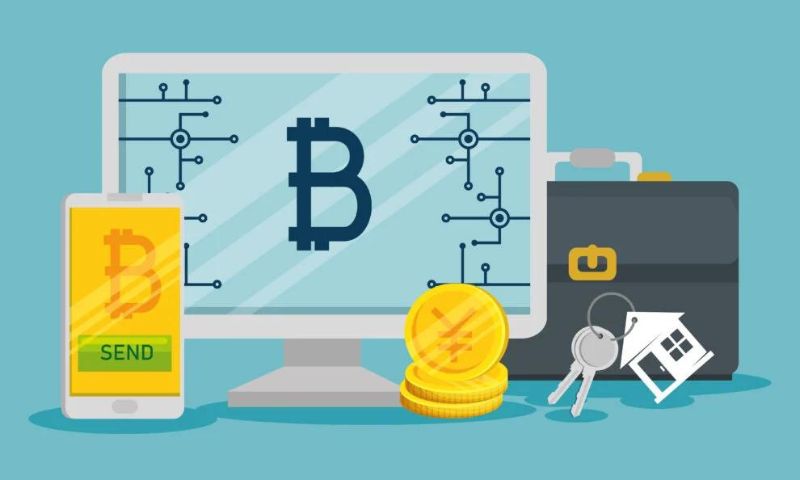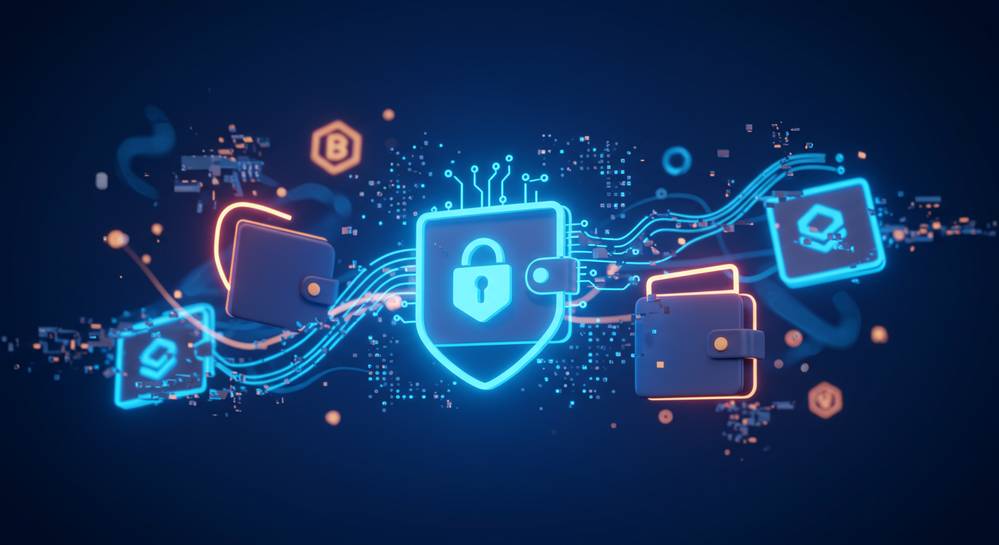In the toss-up of hardware wallet vs software wallet, one question rules them all: how safe is your crypto? Friends, not all wallets are made equal. Your digital coins need a secure home, and today, we break down the wall between hardware and software wallets. You’ll get the sharp facts—no fluff. We’re diving deep into what sets them apart, how they guard your treasures, and which one gives you the smoothest ride on the crypto wave. Get ready to make a smart call on keeping your investments locked down tight.
Understanding the Differences: Hardware vs Software Wallets
Defining Hardware and Software Wallets
What’s a hardware wallet? It’s like a safe for your digital coins. You plug it into your computer to use your money but you take it out when done. This keeps it safe from hackers because it’s not online all the time. Big names like Ledger Nano S and Trezor make these.
Now, a software wallet, that’s an app. It lives on your phone, tablet, or computer. You use it to send, receive, and keep an eye on your coins. It’s handy because it’s right there, but it’s also riskier. It’s like carrying your money in a pocket. If someone gets into your device, your cash could be gone.
Physical vs Digital: The Core Distinctions
Let’s talk about the big choice: hardware vs software wallets.
Hardware wallets are solid; you can hold them. They back up your money with something called a “seed phrase.” You write this down and keep it safe. Lose your device, and these special words help you get your coins back. Cool, right?
Software wallets, though, are easy to get to. Click an icon, and there’s your cash. But online wallet risks? They’re real. If your computer gets a virus or someone hacks your password, bye-bye money. Software wallets are great for spending and trading since they’re quick to access. But for safety? Not so much.
Let’s break it down more:
Hardware wallets keep your private key away from the internet. “What’s that?” you ask. It’s like the key to your coin vault. No one can open it without this key. And since the hardware wallet is offline, we call this “cold storage.” Your coins are as safe as in a freezer. Nothing gets in or out without your say-so.
On the flip side, software wallets are part of your everyday devices. This means they’re at risk of digital wallet vulnerabilities. Still, they are super for those who like everything quick and easy. You trade and pay with a tap, and you can eye your balance anytime.
Now, you’re thinking about your stuff being stolen, right? What about safety stuff like wallet encryption technology and seed phrase backup? Yes, software wallets use them too. But since they’re always “on,” they’re always at risk. Imagine your wallet shouting “Here I am!” to every internet crook.
Hard choices, huh? We’ve got the solid, secure hardware wallet. You only plug it in when you need it. Then there’s the software wallet. It’s part of your device, always ready, but always exposed.
Your decision boils down to this: Do you want a bank vault (hardware) or a back pocket (software) for your cryptocurrency? It depends on how you use your coins. If security for cryptocurrency assets is top of your mind, hardware is your pick. Love quick access and trade a lot? You might lean toward software.
Remember, it’s about making smart choices for your coins. Protect them like the treasures they are. Choose the wallet that suits your crypto life best.

Analyzing Security Measures: How Wallets Protect Your Crypto
The Fort Knox of Wallets: Hardware Security Features
Thinking about hardware vs software wallets? Know this: your crypto is like gold. In the crypto world, hardware wallets are the Fort Knox of it all. These small devices protect your digital gold with top-notch security. They’re like tiny safes you can carry around. But they don’t just sit there; they work hard to keep hackers away.
Hardware wallets are part of cold storage solutions. This means they keep your crypto offline. With no link to the internet, they’re safe from online attacks. It’s like having your valuables in a vault beneath the ground—good luck to anyone trying to get in!
These wallets guard your private keys like soldiers. You see, a private key is a secret code. It unlocks your crypto funds. Hardware wallets keep this code within the device. So even if you plug it into a computer with a virus, your secret key won’t leak out. That’s offline crypto storage at its best—keeping what’s yours, truly yours.
When you get a hardware wallet, think Ledger Nano S features or Trezor wallet security. These are big names in the hardware world. They offer things like USB crypto wallet interfaces and multisig wallet differences. Multisig means more than one key is needed to say yes to a transaction. It’s like needing two keys to unlock a bank safe.
Another cool thing? Wallet encryption technology. It scrambles your data, so even if someone gets your device, it’s all gobbledygook to them. And if you’re thinking about recovery, there’s good news. With a seed phrase backup, you write down a special list of words. These words can bring your wallet back to life, even if your hardware wallet takes a swim.
These features are why folks call hardware the physical crypto wallet benefits champ.
Staying Vigilant Online: Software Wallet Defense Mechanisms
Now, onto the other side: software wallets. They’re part of hot wallet security talk. Hot because they’re online, always ready for your use. They live on your phone or computer, giving you quick and easy access to your crypto. But with great convenience comes greater risk—online wallet risks, to be precise.
Even though they’re easier to use, software wallets face many digital wallet vulnerabilities. Hackers are clever and always finding ways to attack. That’s why these wallets have their own set of defenses, like guards at a bank door. One major guard is wallet encryption technology. It secures your data as it zips through the internet.
Another defense is the wallet recovery options. If you forget your password or your phone takes a dive, you can get back into your account with special recovery tools. It’s not so different from hardware wallets here, but remember, you’re dealing with the faster-paced online world.
And don’t forget, backup strategies with software wallets are super important too. They often use seed phrases, just like hardware wallets. Yes, even the digital world wants to use good old-fashioned words to keep your treasures safe.
Both wallet types are serious about security for cryptocurrency assets. They just do it in different ways. Whether you go for a rugged hardware wallet or a swift software one, knowing their tricks can help you pick the best crypto storage safety for your golden digital coins.

Usability and Access: Finding the Right Balance for Cryptocurrency Storage
The Convenience of Software Wallets: Are They User-Friendly?
Let’s talk about software wallets! These are like your phone’s apps. They hold your crypto and let you pay or get paid from anywhere. So, yes, software wallets are indeed user-friendly! They are super simple to download and set up. Plus, sending crypto is as easy as tapping your screen.
You might wonder which to pick, a mobile or a desktop wallet. Mobile wallet convenience is top-notch—you carry them in your pocket, making it super easy to trade on the go. Desktop wallet access is great for those who like bigger screens. They give you a full view of your crypto, on a handy dashboard.
Even with these neat features, online wallet risks are real. Their digital nature opens them to viruses and hacks. Even the best hot wallet security could fall short if your device gets malware, so you have to be careful. Keep your software updated to avoid digital wallet vulnerabilities.
Remember, crypto storage safety is huge. Whether it’s for your Bitcoin, Ethereum, or other altcoins, picking a wallet that guards your private key is the #1 rule. You can even find wallets that let you pay with a QR code—quick and no-fuss! But don’t forget, it’s smart to have security for cryptocurrency assets. You wouldn’t leave your car unlocked, right? Same goes for your crypto.
Hardware Wallets: Setting Up and Maintaining Secure Access
Now let’s walk over to hardware wallets. Think of them as USB crypto wallets, even if some look different. You plug them into a device when you need to, keeping them offline the rest of the time. This “cold storage” guards your crypto from online attacks.
Setting up a hardware wallet can take a few more steps than a software one. You might have to note down a seed phrase for recovery—like a super-secret password. Once you’re set up, your crypto sits tight, offline and secure.
But there’s more to these physical wallets than just plugging in and feeling safe. You need to keep them in good shape. It means checking for hardware wallet updates—kind of like taking your car for a service to keep it running well. And there’s the Ledger Nano S, known for its nifty features and solid security.
Don’t let fancy words like multisig or air-gapped scare you off. Think of multisig as a lock that needs two keys at once. Air-gapped means your wallet never touches the wild web, avoiding sneaky folks trying to swipe your crypto. Both are ways to keep your coins locked up tight, away from trouble.
What’s lovely is that hardware wallets can’t betray you with a virus like computers might. But you’ve got to take care of them! Keep them away from water, drops, and curious pets. Treat your hardware wallet like a treasure chest.
The takeaway? If you want an everyday wallet, software might be your pick. But if you’re locking away savings, hardware wallets shine. They’re like a safe, but for your digital gold. Either way, understanding wallet encryption technology and having wallet recovery options is your ticket to peace of mind in the vast crypto sea.

From Setup to Recovery: Best Practices for Wallet Management
Backing Up Your Wallet: Seed Phrases and Encrypted Backups
You’ve got a wallet setup. What’s next? Back it up. Use a seed phrase and remember it. This special phrase, like a super-secret password, keeps your crypto safe if things go south. Without it, forget about those coins—you might lose them for good. No joke.
Think of it as your safety net. Write down your seed phrase. Make copies. Store them like treasure. Some folks use a metal plate to engrave theirs. Yeah, like a high-tech pirate. Then, there’s encryption. Back up your wallet in a file and encrypt it. This adds a lock to your digital coin chest. Only you hold the key.
Keeping your backup safe is a major deal. Whether it’s your first time or you’re a pro, don’t slack on it. A lost or stolen backup can spell disaster. Bad guys are everywhere, online and offline.
A hardware wallet? It’s a tiny vault in your pocket. Super cool. But don’t lose it. Its backup—vital for its recovery—needs the same TLC. Treat it like gold, or better yet, like your stash of secret chocolate.
Updating Wallets: Ensuring Security through Routine Maintenance
Next comes updates. Keep your wallet’s software fresh. Outdated wallets are like old locks with rusty keys. They’re easier to break into. Manufacturers send out updates regularly. They patch up any holes and keep hackers at bay. Install them. It’s like changing the locks on your doors—a good habit.
Why do it? New threats pop up all the time. Updates give you new tools to fight them off. Hackers hate updates. So, do the opposite—love them. Check for updates often. Be on the lookout. Your coins depend on it.
With hardware wallets, it’s even more crucial. Upgrading firmware is a key step to keeping your digital treasure chest locked tight. Can it be a hassle? Sure, but so is losing your crypto. Not fun. Do your part to stay safe.
Remember, managing your wallet wisely is huge. It’s how you secure your crypto, your hard-earned digital cash. Keeping backups and updating your wallet can be a drag. But it’s how smart crypto folks stay ahead. Be one of them. No shortcuts.
In this crypto game, wallets are your defense. Beefing them up is your best move. Backups and updates are your sword and shield. Whether it’s a USB-type hardware wallet or fancy desktop software, handling them right is what wins you the fight—against bad guys and mistakes. So, buckle up, update, and keep those backups where only you can find them!
We’ve explored hardware and software wallets, weighing their security, ease of use, and maintenance needs. Hardware wallets shine with robust security akin to a Fort Knox for your crypto, while software wallets offer quick access and simple use. Remember, the trick lies in balancing these aspects to suit your habits and needs. Always back up your wallet and keep your software updated to guard your digital treasure. Choosing the right wallet can be a cinch when you know what each type does best. I hope my insights help you make a smart pick for safe and easy crypto storage. Stay safe and savvy in the crypto world!
Q&A :
What Is the Difference Between a Hardware Wallet and a Software Wallet?
When it comes to cryptocurrency storage, hardware wallets and software wallets serve the same purpose but operate quite differently. A hardware wallet is a physical device that stores the user’s private keys offline, providing extra security by being less vulnerable to online hacking attempts. Conversely, a software wallet is a program that can be installed on a computer or mobile device, storing your private keys online or on a local device, making them more convenient but potentially less secure than their hardware counterparts.
Which Is More Secure: Hardware Wallet or Software Wallet?
Generally, hardware wallets are considered more secure than software wallets because they store private keys offline, away from internet-based threats. They are immune to online hacking attempts and phishing scams when used properly. Conversely, software wallets, while typically employing robust encryption, are still susceptible to viruses, malware, and remote attacks since they operate on internet-connected devices.
Are Hardware Wallets Worth It?
Whether a hardware wallet is worth the investment depends on individual needs and the amount of cryptocurrency in question. For users with a significant amount of crypto assets, the enhanced security features of a hardware wallet can be a worthwhile investment to protect against potential online threats. They are also recommended for long-term storage (often referred to as “HODLing”). However, for everyday transactions and smaller amounts, users might find software wallets more practical.
How Do I Choose Between a Hardware Wallet and a Software Wallet?
Choosing between a hardware wallet and a software wallet involves considering factors such as the value of your cryptocurrency holdings, the frequency of your transactions, and your personal risk tolerance. If you prioritize security and have a large portfolio, you might lean towards a hardware wallet. On the other hand, if you frequently trade or use small amounts, then the convenience of a software wallet could be more appealing. Evaluate the trade-offs in terms of security, cost, and ease of use before deciding.
Can Hardware Wallets Be Hacked?
While hardware wallets are designed to be highly secure, they are not impervious to all forms of attack. The physical device could be compromised if it is obtained by a malicious party who also manages to gain access to your PIN or recovery seed. However, when compared to software wallets, the risks of remote hacking are significantly lower as they require physical access to the device. Proper use, including keeping your recovery seed secure and never sharing your PIN, greatly reduces the risk of your hardware wallet being hacked.



